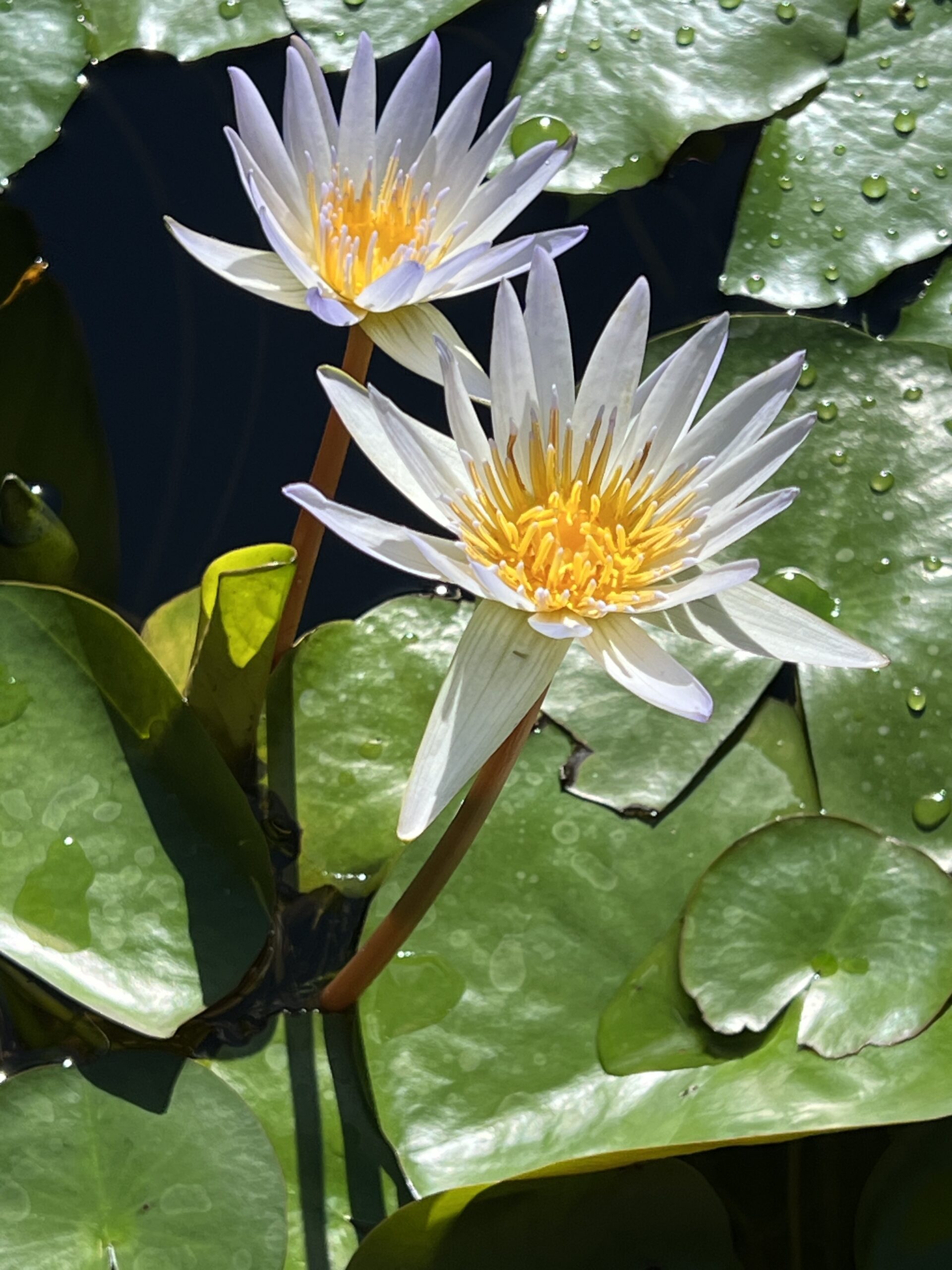BLOG 138
THE RIPPLE EFFECT
“Ring the bells that still can ring; forget your perfect offering. There is a crack in everything; that’s how the light gets in.” (Leonard Cohen, “The Future” album, 1992)
The other morning I sat by the pool to do my centering practices. It’s a small pool by most standards, but tiled a deep marine blue, it’s glassy surface reflecting trees and sky, it makes an ideal symbol of the equanimity for which I strive in my daily reflection time. As I pondered today’s message, a dragon fly briefly skimmed the surface of the pool, creating small ripples that I tried to mimic by gently lobbing a shell into the water and snapping the photo you see at the top of this blog. This photo is a graphic illustration of the ripple effect I wish to explore as today’s topic. But first, a word about the colour blue.
The AI overview description of royal blue offers the following:
- Trustworthiness: In color psychology, royal blue is associated with trust and reliability.
- Tranquility: Royal blue’s ties to the sky and sea bring calmness and tranquility.
- Confidence: Royal blue’s richness implies stability and confidence.
Trustworthiness, tranquility and confidence are complementary to equanimity, and are qualities that I want to emanate in the direct, tangible ripple effect that my energy has on my surroundings.
From experience, I know that if I am in a mad/bad/sad mood, regardless of what I say or do, my energy will have a way of dampening the spirits, or lowering the vibration of those around me, just as the ripples on the water will inexorably continue until they contact the pool coping. Likewise, if I am in a buoyant mood, the energy generated will stir something uplifting in others, whether they sense it immediately or not, the way a crocus bravely pokes up between a crack in the pavement. Or the sun pops out from behind a cloud.
The reason I do a centering practice is that I want whatever energy that emanates from me to be part of the solution versus part of the problem, of which there seem to be So. Very. Many.
“John Simpson of the BBC noted that “there are years when the world goes through some fundamental, convulsive change” and that 2025 is on track to be one of them: “a time when the basic assumptions about the way our world works are fed into the shredder.” (Heather Cox Richardson “Letters From an American”, March 1, 2025)
Before we get into the shredder, it might do well here to expand on the word vibration, one definition of which is: “a feeling or impression that someone or something gives off — usually used in plural ie. good vibrations.” Good vibrations can be generated through recited affirmations, or especially via mantras (that, if interested, you might wish to pursue on the internet or YouTube). The mantra Hari Om, is used to invoke the power of healing and relieve suffering; Om Namah Sivayah, invokes humility, emotional stability, and overcoming obstacles. Om Tara Tuttare invokes compassion and understanding. Om Krisha Guru is a call for a wise teacher or guide. Like hymns sung in Christian gatherings, all of these Sanskrit mantras are tools handed down from ancient seers and sages to help us cultivate the positive vibrations and attributes that can help us cope with this current of convulsive change.
In the yoga of healing, Swami Radhananda encourages her readers to recruit whatever healing powers they possess or can access:
“The power in healing is that even if we are in a painful situation, we don’t flinch. We incorporate, we embrace. As we live through these experiences we note the pain, our reactions and our resolve to be clear, to learn and do our best in the situation. Whatever we can do to heal keeps the learning positive and supportive. In doing so, we gain a sense of victory, and an understanding of what life is all about.”
My centering practices may vary depending on specific situations, but in whatever form, they are indispensable to my sense of purpose, hope, and stability in a rapidly changing world.
P.S. When we moved to our condo a couple of years ago I shredded about twenty-five years’ worth of spiritual journals. I originally kept them thinking they’d make interesting reading when I was too old to do anything but read about who I used to be. They were hugely embarrassing. If that experience is anything to go by, a bit of selective shredding might prove to be a very good thing…
